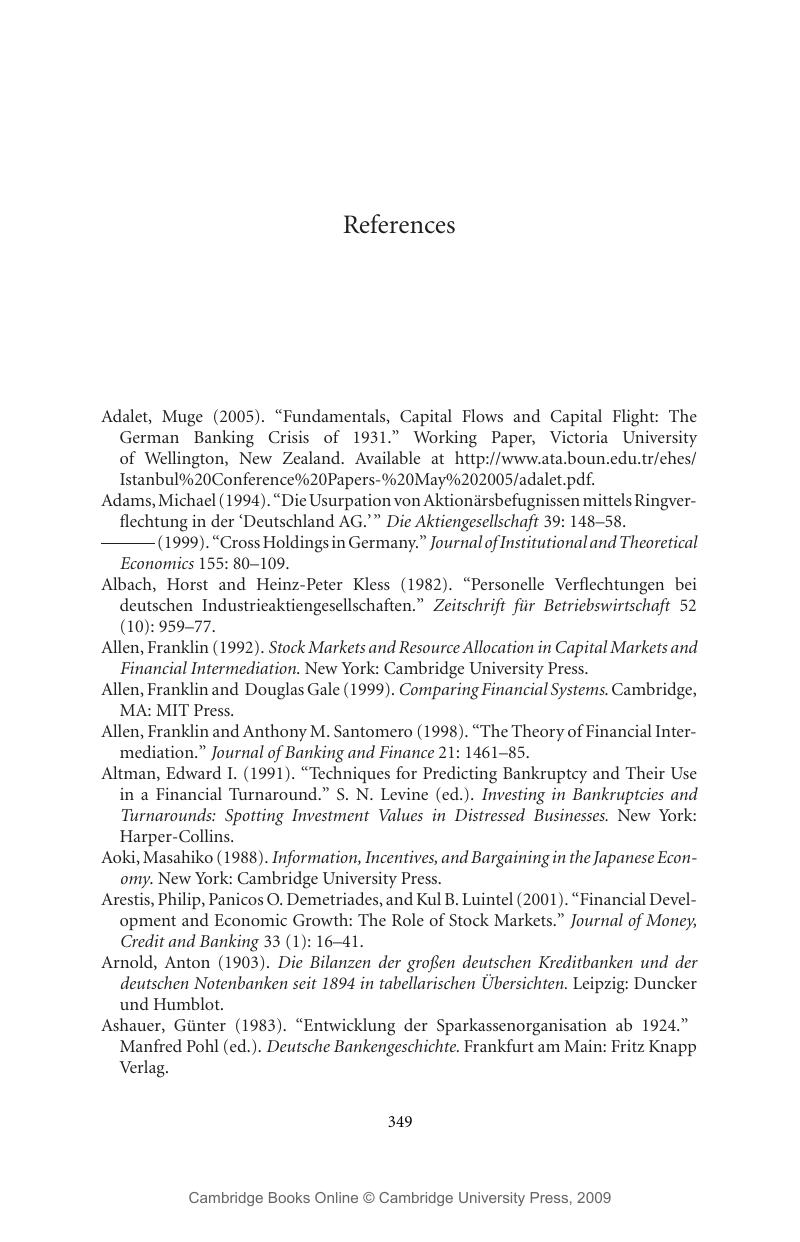Book contents
- Frontmatter
- Contents
- Acknowledgments
- 1 Introduction
- 2 The Development of the German Corporate Finance System until 1913
- 3 Theoretical Perspectives on Banking and Financial System Structure
- 4 The Development and Impact of Universal Banking
- 5 Corporate Governance Relationships: Patterns and Explanations
- 6 Firm Financing and Performance
- 7 Securities Markets
- 8 Upheaval and Recovery
- 9 Conclusion
- References
- Index
- Titles in the series
- References
References
Published online by Cambridge University Press: 27 July 2009
- Frontmatter
- Contents
- Acknowledgments
- 1 Introduction
- 2 The Development of the German Corporate Finance System until 1913
- 3 Theoretical Perspectives on Banking and Financial System Structure
- 4 The Development and Impact of Universal Banking
- 5 Corporate Governance Relationships: Patterns and Explanations
- 6 Firm Financing and Performance
- 7 Securities Markets
- 8 Upheaval and Recovery
- 9 Conclusion
- References
- Index
- Titles in the series
- References
Summary

- Type
- Chapter
- Information
- Finance Capitalism and Germany's Rise to Industrial Power , pp. 349 - 372Publisher: Cambridge University PressPrint publication year: 2007



